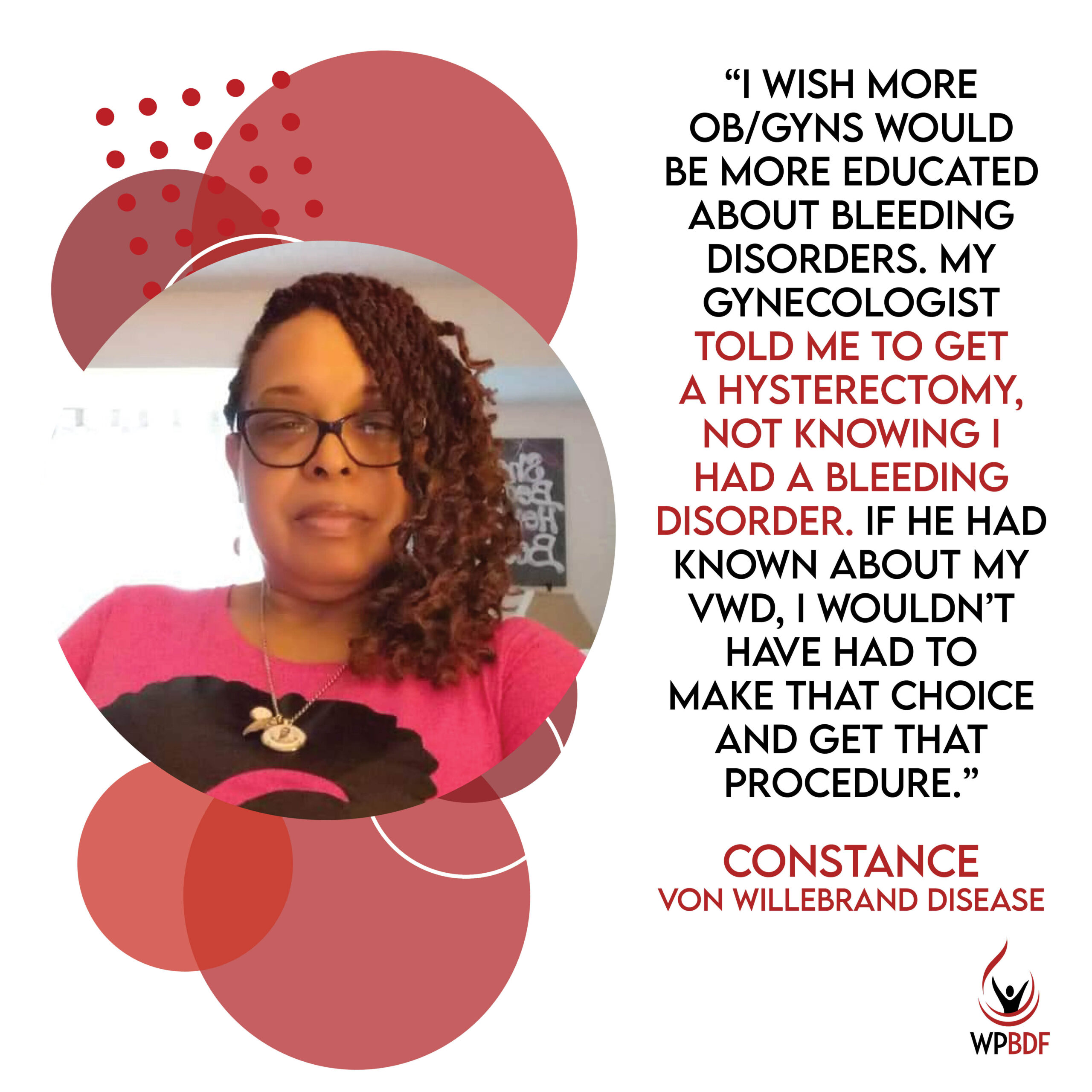Constance is diagnosed with von Willebrand Disease (VWD), and like many other women in the bleeding disorders community, did not receive her diagnosis until much later in life. Constance would not know about her bleeding disorder until she was 54 years old. For a long time, she knew something wasn’t right, but health care professionals kept dismissing her.
Throughout her life, Constance recalls always having to wear a pad and a tampon, but it never helped to prevent leaking. Her periods were so bad that she used to bleed for 15-20 days each month. In her early 20s, Constance had an abortion. After the procedure, she went to the store and a woman tapped her on the shoulder to tell her she was bleeding. “I just remember looking down and there was blood coming down my legs,” she said. “It was that bad to the point that I passed out. I fainted.”
Her cousin took her to the emergency room, where she received her first blood transfusion. Following this incident, Constance would have several more miscarriages and hemorrhage multiple times. She would finally give birth to her first son, but she hemorrhaged and had to receive blood again. When she gave birth to her youngest son, they couldn’t stop her bleeding and ended up giving her factor product.
“I could have died,” Constance said.
Constance continued to bruise heavily and suffer from frequent nosebleeds. She had bleeding in her colon at a young age and had to have multiple colonoscopies. She had a history of breast cancer, and when she had to have a biopsy, her bleeding wouldn’t stop. She would wake up in the middle of the night due to her nose bleeds, and everything would be covered in blood. Because of all these symptoms, her oncologist started recording each time Constance had a bleeding episode. This oncologist just happened to intern with a hematologist in the past, and this prompted her to look at Constance’s factor levels. She realized something wasn’t right and referred Constance to a hematologist at Thomas Jefferson University Hospital.
At that appointment, Constance brought her journals, which she had kept ever since she was a teenager to track her bleeds. She did multiple lab test and detailed her bleeding history.
“I was mad when I first received my diagnosis,” Constance said. “I was made because of how long it took to get answers. At the same time, I felt a sense of relief that I wasn’t crazy, and it wasn’t all in my head.”
Constance is unsure about any prior family history of bleeding disorders as her father passed away before she got any answers, and she doesn’t have the same father as her siblings. Her mother and her aunt didn’t have much to tell about his medical history. She is the mother of three sons, but her bleeding disorder wasn’t passed down to any of them.
“If you’re still having a menstrual cycle, I feel like your OB/GYN has to know about bleeding disorders. If he doesn’t, he might just dismiss you. Don’t let them tell you about your body and what your normal is,” she adds. “Women with bleeding disorders come in all different colors. It’s not specific to a type of race. It’s women all over, different races and age groups, are affected. I wish more OB/GYNs would be more educated about bleeding disorders. My gynecologist told me to get a hysterectomy, not knowing I had a bleeding disorder. If he had known about my VWD, I wouldn’t have had to make that choice and get that procedure.”
Constance is a member of the Eastern Pennsylvania Bleeding Disorders Foundation and is an Advocacy Ambassador for the bleeding disorders community.
Donate to support WPBDF at: https://wpbdf.org/donations


